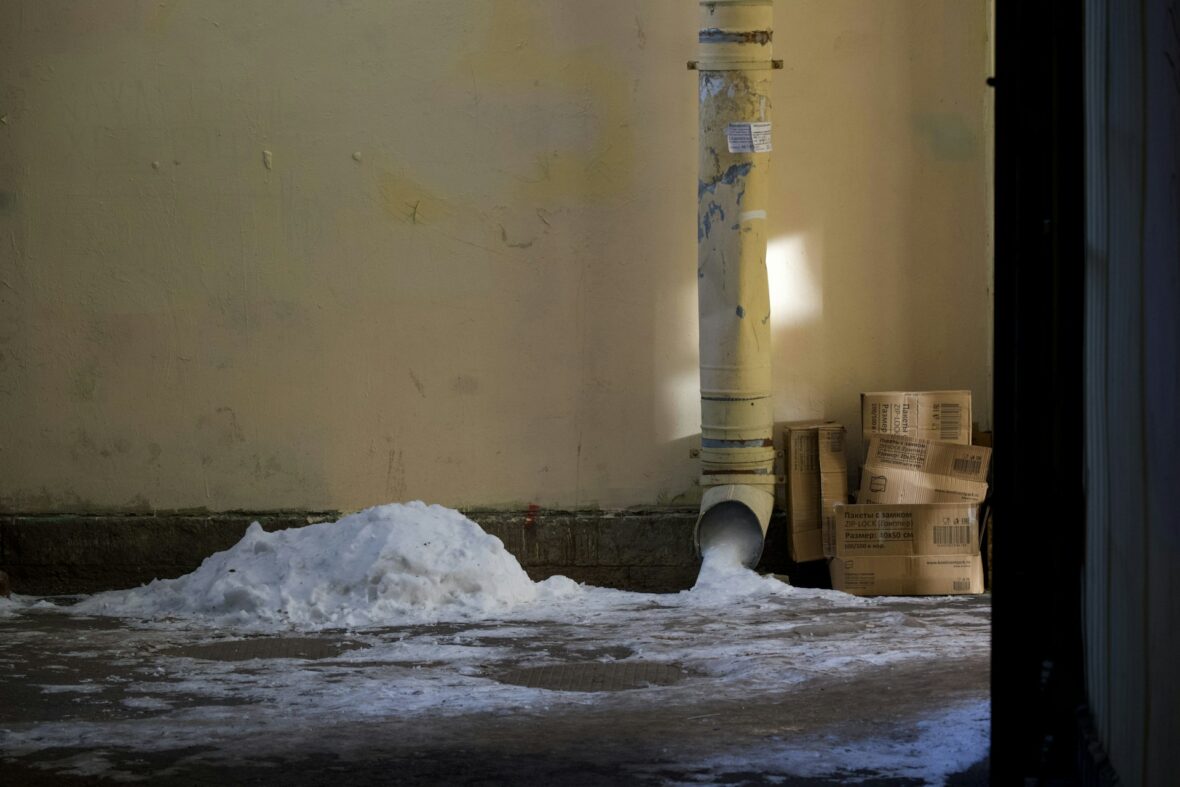When winter temperatures drop, protecting your pipes from freezing becomes a critical concern. While traditional heat tape has been the go-to solution for decades, self-regulating heating cables are revolutionizing pipe protection with superior energy efficiency and smart technology.
Understanding the self-regulating heating cables and heat tape comparison can help you make an informed decision that saves both energy and money while keeping your pipes safe.
Traditional heat tape operates at a constant temperature regardless of ambient conditions, continuously consuming energy even when it’s not needed.
Self-regulating heating cables, on the other hand, automatically adjust their heat output based on surrounding temperatures, providing precisely the amount of warmth required for effective freeze protection.
This fundamental difference in operation translates to significant energy savings, reduced utility bills, and a more environmentally friendly approach to pipe protection. Let’s explore these benefits in detail to understand which solution best meets your needs.
Understanding Self-Regulating Heating Cable Technology
Self-regulating heating cables represent a significant advancement in freeze protection technology. These innovative systems contain a conductive polymer core that responds intelligently to temperature changes.
Core Components and Function
The heart of self-regulating technology lies in its semiconductor polymer matrix. This specialized material increases electrical resistance as temperatures rise and decreases resistance as temperatures fall. The result is an automatic adjustment of heat output that requires no external controls or thermostats.
Key components include:
- Conductive polymer core: Provides temperature-responsive heating
- Parallel circuit design: Ensures continued operation even if sections are damaged
- Insulation layers: Protect against moisture and environmental factors
- Grounding braid: Provides electrical safety and durability
Automatic Temperature Response
Unlike traditional heat tape on pipes that maintains constant output, self-regulating cables modulate their performance based on need. When pipes are cold, the cable increases heat production. As temperatures warm up, heat output automatically decreases, preventing overheating and energy waste.
Traditional Heat Tape Limitations and Energy Consumption
Conventional heat tape systems operate on a simple principle: constant heat output regardless of environmental conditions. While effective at preventing freezing, this approach creates several inefficiencies.
Constant Energy Draw
Traditional heat tape maintains the same wattage output whether the ambient temperature is 10°F or 40°F. This constant operation results in:
- Continuous energy consumption: Power usage remains steady regardless of actual heating needs
- Overheating in mild weather: Unnecessary heat generation when temperatures are above freezing
- Thermostat dependency: Requires additional controls to manage operation, adding complexity and potential failure points
Operational Challenges
Heat tape systems present several operational concerns that impact both performance and energy efficiency:
- Manual switching is required for seasonal use
- Risk of overheating if left on during warmer periods
- Inconsistent heating along pipe lengths
- Higher maintenance requirements due to constant operation
Energy Savings Analysis: Numbers That Matter
The energy savings potential of self-regulating heating cables becomes clear when examining actual consumption patterns and operational efficiency.
Power Consumption Comparison
Self-regulating cables demonstrate substantial energy savings compared to traditional systems:
Traditional Heat Tape:
- Constant 5-8 watts per linear foot
- 24/7 operation during heating season
- No automatic shutoff capability
- Seasonal consumption: 1,200-1,920 kWh per 100 feet
Self-Regulating Cables:
- Variable 2-8 watts per linear foot based on temperature
- Automatic output adjustment
- Reduced operation in mild weather
- Seasonal consumption: 600-1,200 kWh per 100 feet
Real-World Energy Savings
Independent testing shows self-regulating systems can reduce energy consumption by 30-60% compared to traditional heat tape. These savings vary based on:
- Climate conditions and temperature fluctuations
- Installation quality and insulation levels
- Pipe size and material
- Length of heating season
The most significant savings occur during shoulder seasons when temperatures hover near freezing, as self-regulating cables reduce output while traditional heat tape continues full operation.
Installation and Maintenance Advantages
Self-regulating heating cables offer notable advantages in both installation simplicity and long-term maintenance requirements.
Simplified Installation Process
Installation benefits include:
- No thermostat required: Built-in temperature sensing eliminates external controls
- Cut-to-length flexibility: Cables can be trimmed to exact pipe lengths without special fittings
- Self-overlapping capability: Accidental overlapping won’t cause overheating
- Reduced electrical connections: Fewer components mean fewer potential failure points
Lower Maintenance Requirements
The intelligent design of self-regulating systems reduces ongoing maintenance needs:
- Automatic operation eliminates seasonal switching
- Self-limiting temperature prevents overheating damage
- Parallel circuit design maintains operation even with localized damage
- Longer lifespan due to reduced thermal stress
Cost-Benefit Analysis Over Time
While self-regulating heating cables typically require higher upfront investment, the long-term financial benefits make them an attractive option for energy-conscious property owners.
Initial Investment Considerations
Self-Regulating Cables:
- Higher purchase price: $3-7 per linear foot
- Simplified installation may reduce labor costs
- No additional thermostat or control equipment needed
Traditional Heat Tape:
- Lower initial cost: $1-3 per linear foot
- Requires thermostat and control equipment
- More complex installation may increase labor expenses
Long-Term Financial Benefits
Energy savings compound over time, creating substantial long-term value:
Year 1-3 Savings:
- Reduced utility bills offset initial investment
- Lower maintenance costs due to automatic operation
- Decreased risk of overheating damage
Year 4-10 Savings:
- Continued energy savings accumulate
- Extended lifespan reduces replacement costs
- Improved reliability reduces emergency service calls
Return on Investment Timeline
Most self-regulating installations achieve payback within 2-4 years through energy savings alone. Additional benefits like reduced maintenance and improved reliability extend the overall value proposition significantly.
Environmental Impact and Sustainability
Choosing energy-efficient heating solutions contributes to broader environmental sustainability goals while reducing operational costs.
Reduced Carbon Footprint
Lower energy consumption directly translates to reduced environmental impact:
- Decreased electricity demand: Less strain on power grid infrastructure
- Lower carbon emissions: Reduced fossil fuel consumption for electricity generation
- Resource conservation: Extended product lifespan reduces manufacturing demands
Supporting Green Building Initiatives
Self-regulating heating cables support various sustainability certifications and green building standards:
- Energy Star compliance potential
- LEED point contributions for energy efficiency
- Alignment with corporate sustainability goals
- Reduced environmental reporting footprint
Making the Smart Choice for Your Property
Selecting the right pipe protection system requires careful consideration of your specific needs, budget, and long-term goals.
Evaluation Criteria
Consider these factors when making your decision:
Property Characteristics:
- Pipe length requiring protection
- Climate conditions and temperature variations
- Existing electrical infrastructure
- Accessibility for maintenance
Financial Considerations:
- Available budget for initial investment
- Utility costs and energy rates
- Projected payback timeline
- Long-term maintenance expenses
Performance Requirements:
- Freeze protection reliability needs
- Energy efficiency priorities
- Automation preferences
- Environmental impact concerns
Professional Installation Recommendations
Regardless of your choice, professional installation ensures optimal performance and safety:
- Proper cable sizing and placement
- Electrical code compliance
- Insulation optimization
- System testing and commissioning
Smart Heating Solutions for Modern Properties
The evolution from traditional heat tape to a self-regulating heating cable represents a significant advancement in pipe protection technology. These intelligent systems deliver superior energy efficiency, automatic operation, and long-term cost savings that make them an attractive investment for forward-thinking property owners.
Self-regulating heating cables eliminate the guesswork and waste associated with constant-output systems. By automatically adjusting to actual heating needs, they provide reliable freeze protection while minimizing energy consumption and environmental impact.
For property owners seeking to balance effective pipe protection with energy efficiency, self-regulating heating cables offer a compelling solution that pays dividends through reduced utility bills, lower maintenance requirements, and improved sustainability performance.
Consider consulting with a qualified electrical contractor to evaluate your specific needs and develop an optimal heating strategy for your property.






